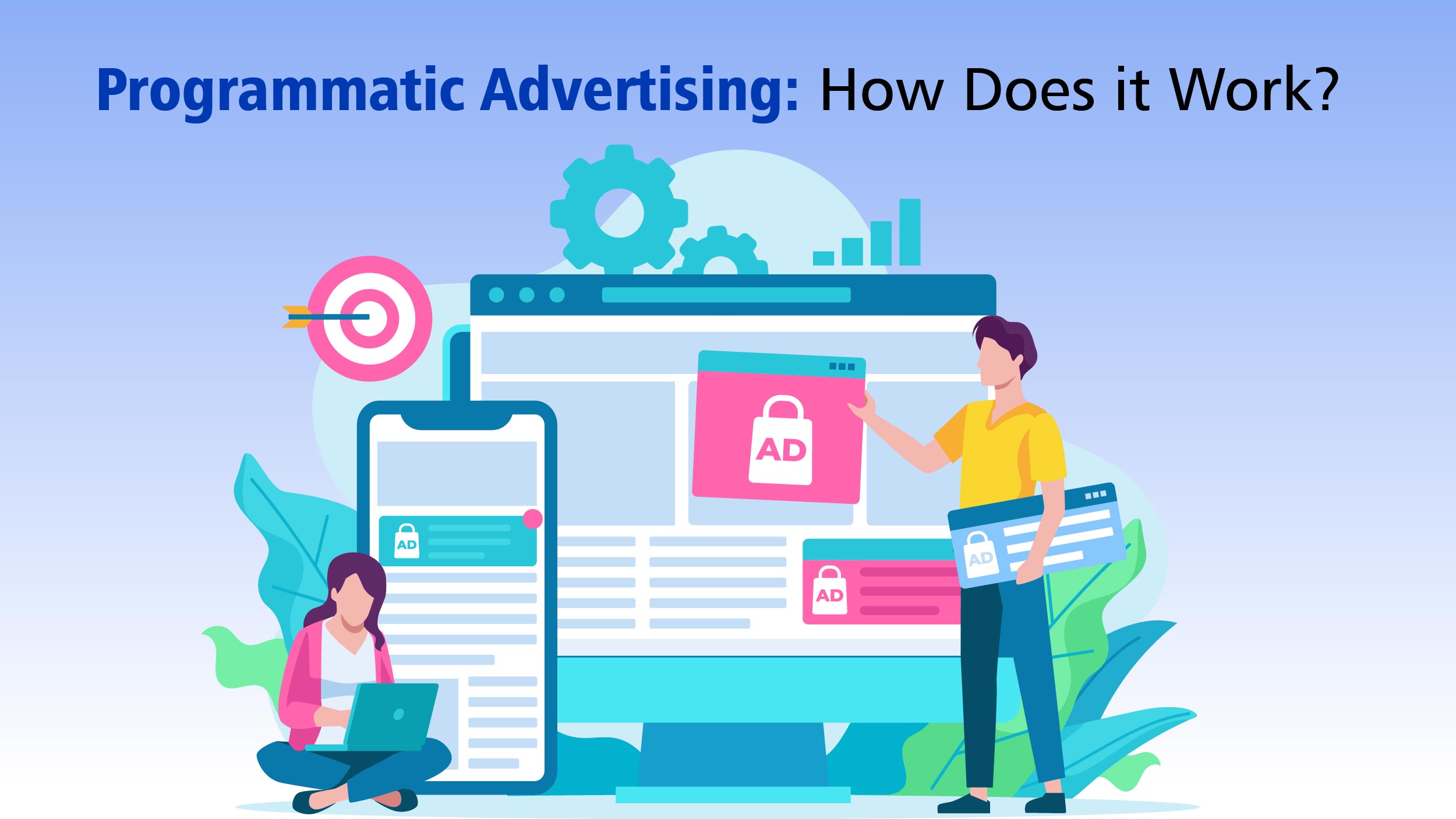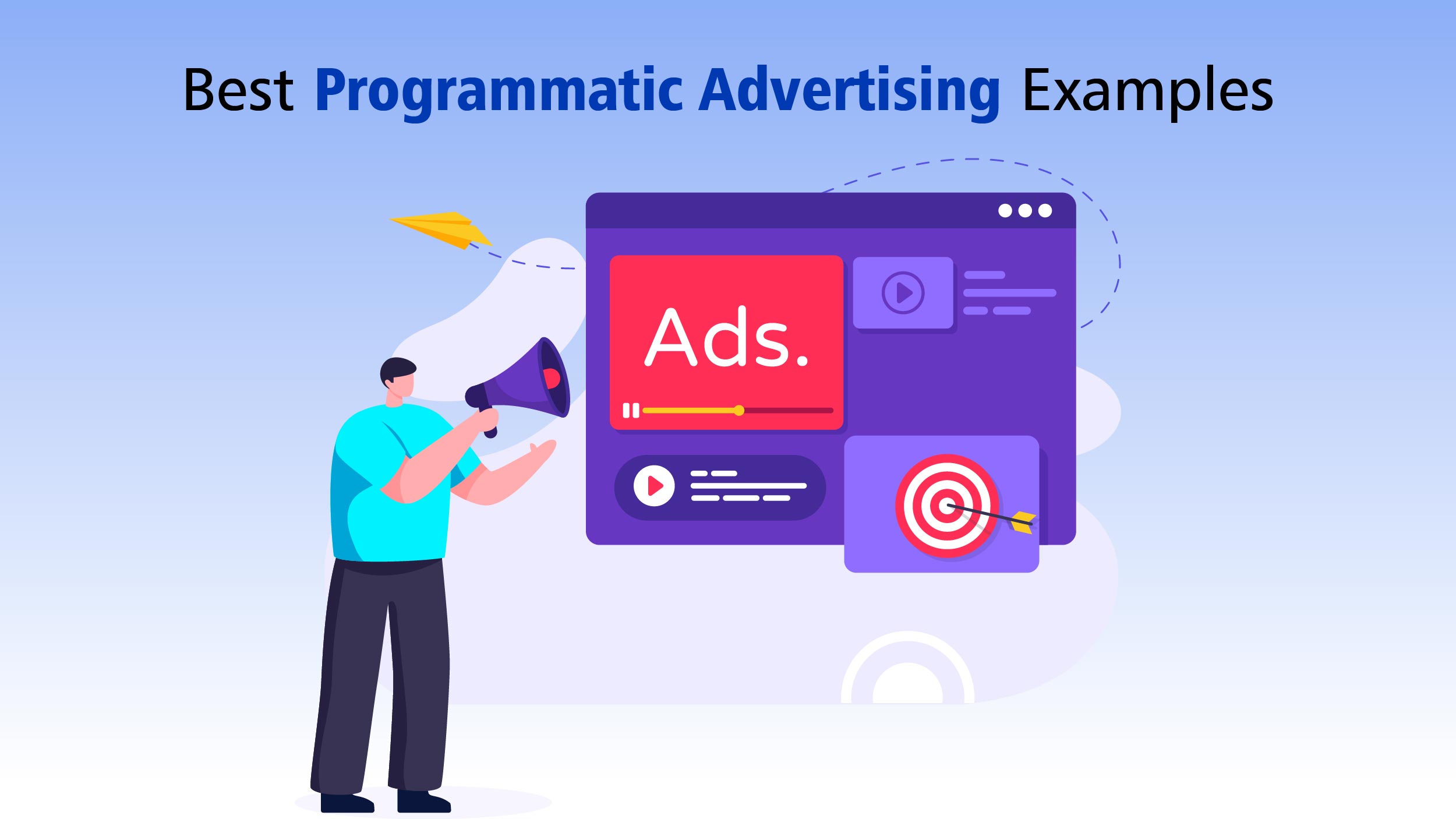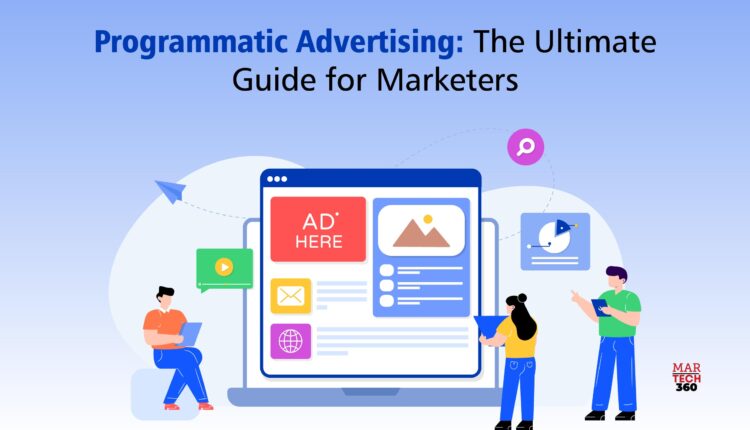Keeping pace with the constantly evolving realm of advertising can sometimes seem daunting. One area that has experienced substantial growth in recent years is programmatic advertising.
In the last two decades, the Interactive Advertising Bureau (IAB) has observed that the utilization of programmatic advertising has evolved into a crucial component in the majority of digital advertising budgets due to its scalability and effectiveness in targeting and positioning digital ads.
Here, we dissect the concept, delve into best practices, and examine brands that excel in its implementation.
What is Programmatic Advertising?
Programmatic advertising streamlines the process of determining the suitable placement and timing for ad placements, eliminating conventional, labor-intensive approaches to buying ad space.
This advertising strategy marks a substantial advancement in digital marketing, utilizing automation, algorithms, and artificial intelligence (AI) to transform the process of purchasing and positioning ads.
Programmatic Advertising: How Does it Work?
 Programmatic advertising campaigns involve multiple platforms such as:
Programmatic advertising campaigns involve multiple platforms such as:
Supply-side platform (SSP): Publishers leverage supply-side platforms to automate the sale of advertising space to advertisers. These platforms empower publishers to efficiently oversee their advertising inventory and link it with various demand-side platforms and ad exchanges.
Demand-side platform (DSP): Advertisers utilize a demand-side platform to acquire ad views on publisher websites at a specified bidding cost. This platform enables advertisers to procure advertising placements from various outlets and oversee all their advertisements centrally.
Ad exchanges: DSPs and SSPs leverage ad exchanges for purchasing and selling advertising inventory. Ad exchanges play a vital role in streamlining ad transactions by empowering advertisers and publishers to transact ad spaces through live bidding processes.
Ad servers: After the successful purchase of an ad space, ad servers are responsible for placing the advertisement on the website of a publisher.
Data management platform (DMP): These platforms aggregate and structure audience information sourced from diverse channels. Subsequently, this information is shared with DSPs and ad exchanges to enhance precision in targeting.
This is how they all work together:
- An SSP hosts a publisher’s advertising space.
- Advertisers utilize a DSP to compete for an advertisement opportunity by leveraging the targeting capabilities offered by a DMP.
- The impression is awarded to the highest bid, resulting in the ad being displayed to a user on the publisher’s website via an ad server.
Best Programmatic Advertising Examples
 The Economist
The Economist
The well-known British publisher, The Economist, adopted programmatic advertising as a strategy to attract new demographics and surpass a subscription growth plateau.
The publisher devised a promotional plan centered on presenting its content from a new perspective to various market segments. The objective was to spark interest among users, offer access to appealing content, and subsequently transform these prospects into subscribers.
During the initial nine days of its advertising campaign, The Economist achieved 50% of its goal, subsequently doubling it in just five weeks. The campaign resulted in 3,617,000 contacts available for re-targeting and produced a total value of GBP12.7 million ($15.6 million) from new subscriptions and additional revenue channels.
McDonald’s
McDonald’s utilized programmatic advertising to tailor advertisements to particular demographic groups by analyzing consumer behavior and buying patterns. This strategic approach led to elevated foot traffic and sales at their brick-and-mortar establishments.
By utilizing dynamic creative optimization and geotargeting, the initiative resulted in a 7.5% surge in foot traffic alongside a 4.5% boost in sales, enabling the delivery of tailored and pertinent advertisements to the target demographic.
The initiative further contributed to boosting brand image and increasing customer interaction, thereby nurturing deeper customer connections and enhancing the overall brand standing.
Also Read: Self Serve Advertising– A New Approach In The World Of Online Advertising
Winning Strategies for Programmatic Advertising Success
Having grasped the concept, let’s delve into the initial steps of launching ads through programmatic. Here are seven essential strategies and recommended practices to contemplate as you embark on this journey.
1. Getting to Know Your Target Audience
Your target audience must be precisely defined and understood before you can launch any campaigns. This encompasses their demographic traits, preferences, actions, and any pertinent data that can enhance the precision of your advertising strategies.
2. Establish Defined Objectives and KPIs
Before launching your campaign, be very certain of your goals and key performance indicators (KPIs). They will direct your plan of action and assist in gauging your level of achievement.
3. Opt for the Right Tech Partners
It’s critical to select a Demand Side Platform (DSP) and other technology partners that share your objectives and have a solid track record of quality and transparency.
4. Leverage Data
Utilize data-driven approaches in programmatic advertising by incorporating both first-party and third-party data to enhance targeting strategies. Regularly adjust these strategies based on campaign outcomes to optimize performance.
5. Allocate Funds for Testing
Allocating a segment of your financial resources for testing is crucial when implementing a new marketing strategy. This allocation enables you to explore various approaches, assess outcomes, and refine your campaigns strategically.
6. Monitor for Ad Fraud
Ad fraud, which encompasses non-human traffic and click fraud, poses a considerable threat in programmatic advertising because of its automated operation. Vigilantly overseeing your marketing campaigns for anomalies and leveraging advanced ad fraud identification solutions can safeguard your ad expenditure, maintain the credibility of your data, and guarantee that your advertisements are being viewed by authentic, actively engaged individuals.
7. Cross-Channel Integration
Align your programmatic marketing efforts consistently across various channels to ensure a cohesive and integrated customer journey. Maintaining a unified message and brand identity across multiple platforms and interactions can enhance brand visibility and amplify the impact of your marketing initiatives.
Programmatic Advertising Trends
As programmatic advertising advances, it becomes essential to go beyond merely placing your ads in the right location and hoping for optimal results. Emerging technologies facilitate further refinement of programmatic buying, enhancing both its efficacy and security measures.
● The Growing Dominance of AI and Machine Learning
Advanced AI and machine learning engines have the capability to predict user behavior in advance and customize ads in real time. They can even anticipate future trends, aiding in the development of upcoming campaigns.
● Placing Data Privacy in Focus
Regulations such as the California Consumer Privacy Act (CCPA) in the U.S. and the General Data Protection Regulation (GDPR) in Europe signify a global shift toward more transparent and ethical data practices. Advertisers must ensure that personalization respects privacy. Ensure that any DSPs you utilize are compliant, and prioritize transparency in your advertising strategy to foster trust with your audience.
● Outcome-Driven Metrics
Ads extend beyond clicks and impressions. It’s essential to assess real outcomes – did the ad result in a store visit, a purchase, or a long-term subscription? Focus on metrics such as conversion rates and average order value.
● Attention Metrics
In an era marked by short attention spans, capturing and maintaining user interest is challenging. Therefore, it’s crucial to measure the quality of engagement. It’s not only about the potential of the ad being viewed (viewability) but also how many people actually viewed it and what level of engagement it achieved. This underscores the growing importance of attention metrics as a key measurement for digital advertising.
Concluding Thoughts
Programmatic advertising represents a pivotal shift in the way digital ads are bought and sold. Its automated and data-driven approach offers advertisers unparalleled precision and efficiency in reaching their target audiences. From the rise of AI and machine learning to the emphasis on data privacy and outcome-driven metrics, this advertising strategy continues to evolve and adapt to the changing landscape of digital marketing.
By leveraging these advancements and staying attuned to emerging trends, businesses can maximize the effectiveness of their advertising campaigns and stay ahead in today’s dynamic marketplace. As technology continues to advance, it will undoubtedly remain a cornerstone of modern marketing strategies, driving innovation and delivering tangible results for advertisers around the globe.


Comments are closed.